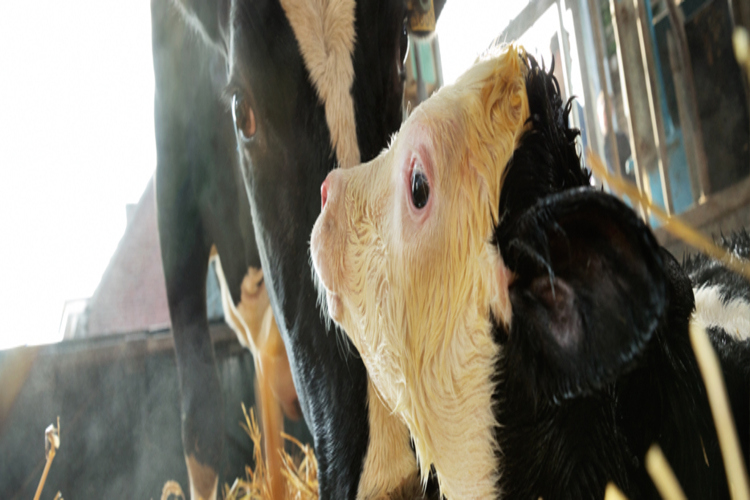Key takeaways from the research:
-
If calves are fed colostrum according to their weight they should be fed an amount of colostrum equal to 8.5% of their birth weight.
-
Feeding transition milk in addition to colostrum will not result in a further increase in serum IgG but might have a positive impact on calf health

The optimal amount of colostrum for calves depends on the weight of the calf
Dairy farmers know that making sure newborn calves achieve the right amount of Immunoglobulin G (IgG) concentration in their blood is essential in order for them to have adequate immunity to disease for the first few weeks of life, while their own immune system develops. However, as soon as a calf is born, the ability to absorb IgG goes down and ceases completely by the time 24 hours have elapsed[1]. As we know, It's essential that neonatal calves attain at least 10 mg /mL of serum IgG for transfer of passive immunity to be successful. But how are we to make sure that calves ingest and absorb enough of it from colostrum in the right timeframe to be optimally effective? Researchers at the Teagasc, Animal & Grassland Research and Innovation Centre in Cork, Ireland, and from the School of Veterinary Medicine at the University of Dublin carried out an extensive 10-week study[2]; which looked at several factors.
Study design
Instead of using a calf feeding schedule with a set amount of colostrum to be fed to calves just after birth, the researchers fed colostrum based on different percentages of body weight (BW). To do this, they divided 99 dairy calves into three groups immediately after they were born: those fed an amount of colostrum equal to 7%, 8.5% or 10% of their body weight at birth. Feeding took place within the first two hours of life. They then further divided the three groups into a total of nine, with 1/3 of each of the BW groups receiving either zero, two or four subsequent feedings of transition milk, in order to see if this also had an effect on serum IgG or positively affected their health in any way. The researchers measured serum IgG levels at 24, 48, 72 and 642 hours of age and they assigned health scores to the calves twice a week throughout the study.
Positive effects of feeding 8.5% of body weight in colostrum and positive effects of feeding transition milk
Calves in the 8.5% BW colostrum group had the greatest mean serum IgG at 24 hours of life with 39.1 g IgG/L, whereas the 7% BW group had 30.3 g IgG/L and the 10% BW group had 31.2 g IgG/L. While all serum IgG levels were on the decline at 48 hours of life and declined even further by 72 hours of life, the 8.5% BW group still maintained the highest levels. And, while at 642 hours of life, the 8.5% BW group still had higher mean serum IgG than the 7% group, there was at that stage no difference between their IgG antibody level and that of the 10% BW group.
Transition milk feedings did not have a significant effect on serum IgG level, but did have some positive effects on health scores. It turns out that those calves that did receive some amount of transition milk (as opposed to those that received no transition milk) tended to have lower odds of having both a poor eye/ear health score and a poor nasal health score.
A new way to calculate the correct amount of colostrum to be fed
Feeding the right amount of colostrum and doing so rapidly after birth is the key to proper passive immunity transfer for neonatal calves. Feeding an amount of colostrum equal to 8.5% of a calf's body weight within the first two hours of life helped calves attain a higher serum IgG concentration in those critical first days. And, while feeding transition milk doesn't seem to affect serum IgG levels, it does appear to improve overall health. These findings may be the key to understanding what newborn calf feeding schedule results in attaining the best serum IgG levels and therefore better outcomes for overall calf health.
References
[1] Weaver, D. M., J. W. Tyler, D. C. VanMetre, D. E. Hostetler, and G. M. Barrington. 2000. Passive transfer of colostral immunoglobulins in calves. J. Vet. Intern. Med. 14:569–577.*
[2] Conneely, M, Berry, D. P, Murphy, J.P, Lorenz, I ,Doherty, M.L and E. Kennedy, Effect of feeding colostrum at different volumes and subsequent number of transition milk feeds on the serum immunoglobulin IG concentration and health status of dairy calves J. Dairy Sci. 97 :6991–7000.*



